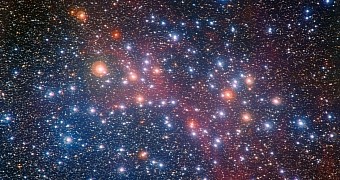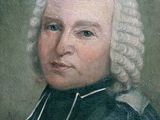Space is a magical, wondrous place, and astronomers insist on reminding us of this very simple fact every chance they get. Then again, it's doubtful that anyone could ever hold this Captain Obvious-inspired habit of theirs against them.
Not to beat about the bush, it was this past November 26 that the European Southern Observatory (ESO) saw fit to provide us mere mortals with some much-needed entertainment by releasing a positively stunning image of the Wishing Well Cluster.
The image, included in the gallery below, was obtained back in February 2013 with the help of the Wide Field Imager instrument at ESO's La Silla Observatory in Chile, and it shows average-size stars and massive ones hanging our together like the best of buds.
Introducing the Wishing Well Cluster
Astronomers with ESO explain that, as shown by investigations carried out over the years, the Wishing Well Cluster, otherwise known as NGC 3532, is located at a distance of about 1,300 light-years from our home planet.
It sits in the constellation Carina, which space enthusiasts sometimes refer to as the Keel of the ship of Argo. The Carina constellation owes its nickname to the fact that eons ago it was part and parcel of a larger constellation dubbed Argo Navis.
This much larger Argo Navis constellation, documented as a self-standing celestial area by 2nd century astronomer Ptolemy, was divided into three component constellations by French space explorer Nicolas Louis de Lacaille in the 17th century.
Apart from Carina, the Argo Navis constellation's two other components are the Puppis and the Vela constellation. The names of these three smaller constellations are the Latin names for three ships parts, i.e. the keel, the poop deck and the sails.
Turning back to the Wishing Well Cluster, scientists say that this gathering of stars can be observed with the naked eye by folks lucky enough to live in our planet's southern hemisphere. The cluster was first documented by French astronomer Nicolas Louis de Lacaille in 1752 and catalogued in 1755.
The cluster is about 300 million years old. It packs both stars that aren't all that impressive size-wise and freakishly massive ones. Of the stars included in this clusters, some have gone through their entire fuel supply and are now nearing the end of their life. They are known as red giant.
Apparently, it is precisely because it is home to various types of stars that the cluster appears as colorful as it does in this ESO image. Thus, the red giants appear in an orange hue and the stars of a moderate mass are shown in blue-white colors.
Why this group of stars is nicknamed the Wishing Well Cluster
As mentioned, the official name for this agglomeration of stars 1,300 light-years from our planet is NGC 3532. The reason it is more commonly referred to as the Wishing Well Cluster is that, when observed from afar, the stars that comprise it resemble coins at the bottom of a well.
Interestingly enough, astronomers with ESO say that, every once in a while, this distant crowd of stars is also called the Football Cluster. Apparently, this is because, when observed from a certain angle, its shape resembles that of a rugby ball.
“It is also referred to as the Football Cluster, although how appropriate this is depends on which side of the Atlantic you live. It acquired the name because of its oval shape, which citizens of rugby-playing nations might see as resembling a rugby ball,” ESO scientists explain.

 14 DAY TRIAL //
14 DAY TRIAL // 



